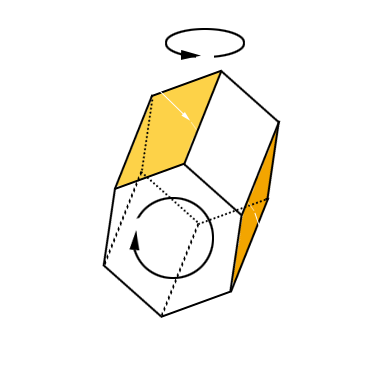On the
22° halo lies a type of halo that can take on various forms. Depending on the sun's altitude, a different image results. With a solar altitude of up to 32°, this halo phenomenon is called the lower and upper tangent arc of the 22° halo, above that height it is known as a circumscribed halo. When the sun is low, the two branches of the
upper tangent arc form a sharp angle. As the sun's altitude increases, the branches approach the 22° halo more and more. At the same time, they become longer and meet at a solar altitude of 32° with the
lower tangent arc. The resulting closed ring is called a circumscribed halo. It touches the 22° halo above and below the sun. Initially, the circumscribed halo is still oval. As the sun's altitude increases, it becomes more circular and approaches the 22° halo. At a solar altitude of 70°, the circumscribed halo nearly coincides with the small ring. The circumscribed halo, like the tangent arcs, is more intensely colored than the 22° halo. It is reddish towards the sun and bluish on the outside. The lower tangent arc is quite rare to see, as it only appears when the sun is more than 22° above the horizon. When the sun is lower than 22°, it is only visible in ice fog or from an elevated location (mountain, airplane).
The contact arcs and the circumscribed halo are created in
horizontally oriented column crystals. The refraction angle is 60°. The light enters a prism surface and exits at the next but one. The light follows the same path with the
parhelia and the 22° halo. The different types of halos arise only from the different orientation of the crystals.

